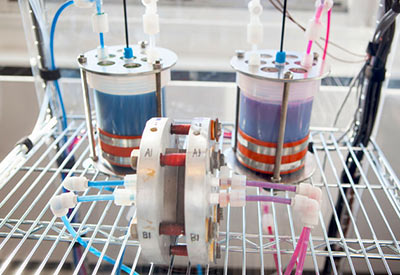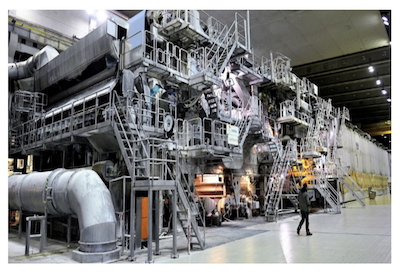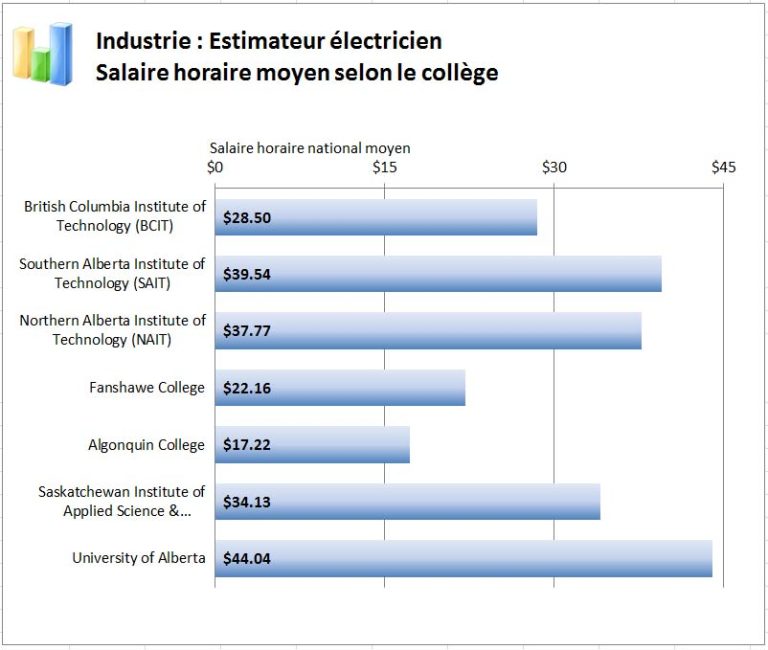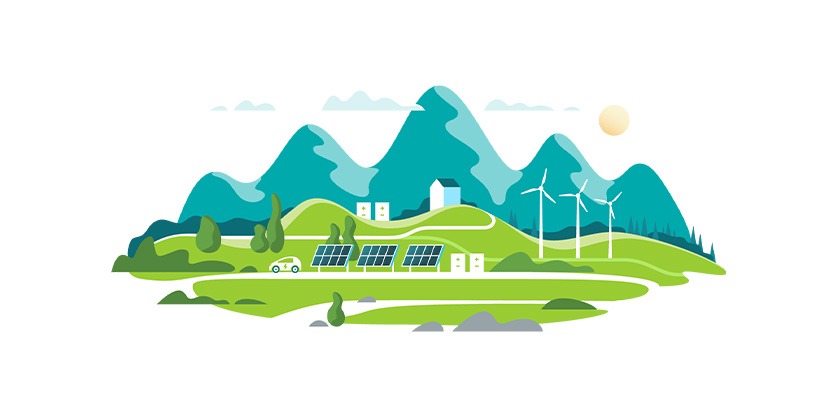Les batteries qui emmagasinent la puissance sous forme liquide : une percée en énergie renouvelable

Capter l’énergie du vent et celle du soleil est de plus en plus facile, mais la stocker pour un jour de pluie est une autre histoire. C’est un problème, comme ne manquent jamais de le souligner les critiques des énergies renouvelables. L’énergie éolienne a tendance à être plus importante pendant la nuit, lorsqu’elle est le moins nécessaire. L’énergie solaire, par comparaison, est plus facilement disponible quand le soleil est lumineux – mais la question est de savoir comment conserver cette énergie pour plus tard, lorsque les industries et les collectivités en ont besoin.
Un nouveau type de batterie est en cours de développement et est peut-être la clé qui permettra de changer la façon dont l’électricité est stockée sur des grilles, donnant ainsi un bon point à l’énergie éolienne et l’énergie solaire en faisant basculer l’énergie renouvelable qu’ils produisent plus fiable et plus rentable qu’elle ne l’est aujourd’hui.
Lire l’article …
Capturing the energy from the wind and the sun is becoming easier, but storing it for a rainy day is another story.
This is a problem, as critics of renewables often point out. Wind energy tends to be most abundant at night, when it’s needed least. Solar power, by comparison, is most readily available when the sun is bright − but the issue is how to retain that power for later, when industries and communities need it.
But a new type of “flow” battery being developed may hold the key to changing the way electricity is stored on grids, creating a tipping point for wind and solar power by making the renewable energy they produce more reliable and cost-effective than it is today.
First reported this year in Nature, it is now being developed at GE Global Labs by a team with chemist Grigorii Soloveichik. It’s called a flow battery because it deploys water and other liquids to store the electrical charge rather than solids.
“They can store energy from wind, for example, so power companies can use it when they need it,” Dr. Soloveichik says. The amount of energy a flow battery can store depends on the size of the tanks holding the liquids; Dr. Soloveichik says they can hold tens of kilowatt hours and can be used as backup for commercial and residential electricity supplies.
The outcome of this development is important to electricity planners in places such as Ontario. They envision a mix of clean and renewable energy to replace old-style coal burning plants, which have now been phased out in the province. But until now, policy has been uncertain as to how much renewable energy to deploy, because it’s hard to determine how to store it effectively.
Current plans involve a combination of natural gas-fired turbines (which emit considerably less greenhouse gases than coal) along with nuclear and hydro. Storing energy in all these conventional systems is relatively easy; the power plants can fire up the turbines when the power is needed, for example, and in the case of hydro, the flow of water through the hydraulic turbines can be controlled, or the water can simply be dammed up.
Flow-type batteries being tested at GE and Harvard University look to chemical compounds called quinones to store electrical energy in liquid cells.
Hydrogen peroxide is a type of quinone, and there are many organic sources in plants such as rhubarb; scientists are looking at the properties of as many as 10,000 different quinone molecules to find the best candidates.
These molecules “introduce a vast new set of possibilities,” says Prof. Roy G. Gordon of the Harvard School of Engineering and Applied Sciences. “Some of them will be terrible and some will be really good. With these quinones we have the first ones that look really good.”
One factor that makes flow batteries potentially more efficient than conventional ones is that they store their energy in external tanks instead of within the battery. In a conventional battery, such as the common lithium-ion type, the materials that store the energy are contained in a cell along with electrolytes, the substances that are electrically charged.
Conventional batteries use solid electrodes, which combine the energy storage with the hardware that converts the energy into useable power. But with the electrolytes in separate tanks, they can be mixed with the stored energy when it’s time to draw power. The advantages are that the operation can be scaled up or down and that the batteries are easy to recharge.
Larger amounts of energy can be stored in the liquid tanks at lower cost; the only limit, really, is the size of the tanks. While it may not be possible yet to have liquid sloshing around in your phone, it may be practical to store power at a wind or solar farm.
There’s a similar need to extend the battery life for electric vehicles (EVs) and hybrids. Dr. Solveichik and GE are also working with the U.S. Department of Energy to build a battery that could power an EV for more than 380 kilometres — enough to drive from Toronto to Ottawa or almost from Saint John to Halifax.
Meanwhile, GE Technology has enjoyed success with its industrial Durathon batteries, which use ceramic-aluminum cells that hold power and an external cooling system that regulates the unit to prevent the power from being discharged prematurely. These batteries can be combined in modules to provide more storage with uninterruptible power.
Durathon technology was originally developed for locomotives; now it’s being put to use in larger-scale electricity transmission and distribution grids as well as micro-grids. Last year, GE said it would back up three of its 2.5-megawatt Brilliant wind turbines with 50 kilowatt-hour Durathons, along with the software to manage their use for storing and regulating wind energy.
This article was produced by The Globe and Mail in consultation with GE.












